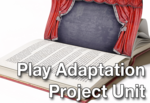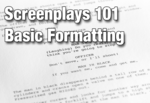PD Courses
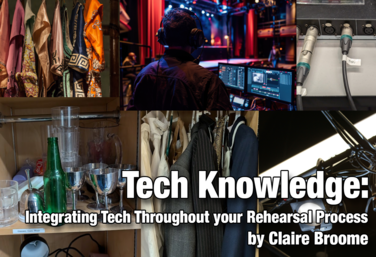
PD COURSE
Tech Knowledge: Integrating Tech Throughout Your Rehearsal Process
by Claire Broome
This course will help you integrate technical theatre earlier in the creative process to help reduce the stress of tech week, and make sure you have what you need before choosing a show. We will explore how to include your technical theatre team from day one and will help you have an easier experience throughout the rehearsal process and final performances.
Read More
about Tech Knowledge: Integrating Tech Throughout Your Rehearsal Process
Read Less
about Tech Knowledge: Integrating Tech Throughout Your Rehearsal Process
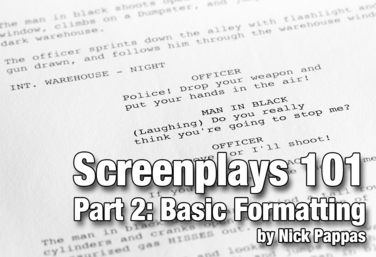
PD COURSE
Screenplays 101 - Part 2: Basic Formatting
by Nicholas Pappas
This course is a Part 2. In a Screenplays 101 course, screenwriter Nick Pappas covers both Structure and Formatting. Here in Part 2 we'll cover Basic Formatting. If you have not already watched Screenplays 101 – Part 1: Basic Structure, I highly recommend you go back and do so now. Having that knowledge under your belt will help you navigate Part 2 of this course.
The goal is that, by the end of this course, your students have a basic understanding of how a screenplay is formatted and why it is formatted that way, all with an eye toward developing their own screenplay.
Read More
about Screenplays 101 - Part 2: Basic Formatting
Read Less
about Screenplays 101 - Part 2: Basic Formatting
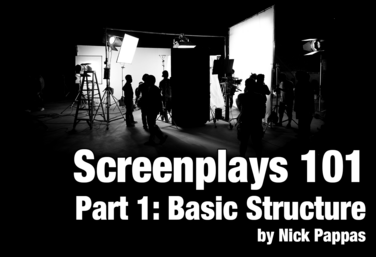
PD COURSE
Screenplays 101 - Part 1: Basic Structure
by Nicholas Pappas
Screenwriter Nick Pappas leads a two-part course on screenplays 101. Great scriptwriting is not something that can be covered in a single course: so we're going to start with the basics. Those basics are going to be split up into a Part 1 and a Part 2. Part 1, this course, will concentrate on basic film structure. Part 2 will concentrate on screenplay formatting.
By the end of this course, students should have a basic understanding of history, terminology, and are able to identify the barest bones of the three-act structure, all with an eye toward developing their own screenplay.
Read More
about Screenplays 101 - Part 1: Basic Structure
Read Less
about Screenplays 101 - Part 1: Basic Structure
Latest PLC

PLC
Navigating Personal Challenges
Hosted by Matt Webster, Lindsay Price, Claire Broome, Lea Marshall
Teachers are people. And people face challenges. Challenges like family illnesses, relationship crises, financial worry, and so much more. What is a teacher to do when a personal crisis hits?
Teachers are expected to navigate personal challenges, yet still effectively teach their classes. That means teachers try to keep these challenges from spilling into the classroom - but can they? Should they? Join our panel for an in-depth discussion on navigating personal challenges as a teacher.
Read More
about Navigating Personal Challenges
Read Less
about Navigating Personal Challenges
Attachments

PLC
AI in the Drama Classroom
Hosted by Matt Webster, Lindsay Price, Jessica McGettrick, Elizabeth Holbrook
Artificial Intelligence is here. In the past few years it has found its way into almost every corner of modern life - including the classroom. However, important questions remain. Questions like: "Is there a place for AI in the classroom?" "Does that include the Drama classroom?" and "What does AI in the Drama classroom look like?"
These are just some of the questions we will tackle when you join us in this forward thinking PLC.
Read More
about AI in the Drama Classroom
Read Less
about AI in the Drama Classroom
Attachments

PLC
Classroom Management with Social Emotional Learning - Session Two
Hosted by Matt Webster, Lindsay Price, Christa Vogt, Shelby Steege
If you talk to teachers these days, the same topic pops up over and over: Post pandemic classroom management. It doesn't matter if they are a highly experienced educator or fresh out of their student teaching, they all say the same thing - the vibe in the classroom has changed. Teachers say they need new tools in their classrooms to address these changes, so in this PLC we are going to break out the best tool in the toolkit: Social Emotional Learning (SEL). Join us for a timely conversation about how you can use SEL in your classroom to reset your students and improve your classroom management.
Read More
about Classroom Management with Social Emotional Learning - Session Two
Read Less
about Classroom Management with Social Emotional Learning - Session Two
Attachments
Curriculum Units
Lesson Plans
LESSON PLAN
02- - Emergency Lesson Plans: Middle School Drama Class Task Sheets Volume 2
by Drama Teacher Academy
This ebook contains a set of multi-part task sheets, designed to be used as Emergency Lesson Plans for middle school students.
The task sheets in this resource are designed to follow a scaffolding approach to topics through multiple parts. Students may analyze a monologue in Part 1, and then write their own in Part 2. They may read about set design using lines, draw a room using lines to visualize an atmosphere, and then create the world of the play that fits the set. They may respond to a quote and then use that quote as the starting point for a theatrical expression.
Task Sheets come with additional handouts and worksheets to make it as straightforward as possible for substitutes to give information to students and for students to complete their
tasks.
Read More
about 02- - Emergency Lesson Plans: Middle School Drama Class Task Sheets Volume 2
Read Less
about 02- - Emergency Lesson Plans: Middle School Drama Class Task Sheets Volume 2
Resources
RESOURCE
Planning an IB Theatre Course
The DTA curriculum, units, and professional development courses can be used to support the IB teacher in MYP, IB-Prep Class, grade 11 or DP Year 1 as they prepare students to engage in the assessment objectives of inquiring, developing, presenting, and evaluating.
The materials in the DTA are not authorized by IB; however, they will give you the ability to guide students to think creatively, actively, and critically as theatre-makers and strengthen the skills necessary for students to successfully complete the Year 2 assessment tasks.
The purpose of this document is to give you IB direction, vocabulary, and extensions to refer to when reviewing DTA material.
Additional assets are included that have connections to specific DTA units.
Read More
about Planning an IB Theatre Course
Read Less
about Planning an IB Theatre Course
Attachments
RESOURCE
Scenes for Classroom Study: The Hope and Heartache Diner
Use this scene in your classroom for character study, scene work, substitute teachers, performance, Individual Event competitions, and however else you can imagine.
Characters: Cooper, Liam, Dean
Genre: Comedy
Read More
about Scenes for Classroom Study: The Hope and Heartache Diner
Read Less
about Scenes for Classroom Study: The Hope and Heartache Diner
RESOURCE
Scenes for Classroom Study: Anxiety is Orange
Use this scene in your classroom for character study, scene work, substitute teachers, performance, Individual Event competitions, and however else you can imagine.
Characters: Chloe, Tyler
Genre: Vignettes
Read More
about Scenes for Classroom Study: Anxiety is Orange
Read Less
about Scenes for Classroom Study: Anxiety is Orange
RESOURCE
Scenes for Classroom Study: Characters Behaving Badly
Use this scene in your classroom for character study, scene work, substitute teachers, performance, Individual Event competitions, and however else you can imagine.
Characters: Vac, Palla
Genre: Dramedy
Read More
about Scenes for Classroom Study: Characters Behaving Badly
Read Less
about Scenes for Classroom Study: Characters Behaving Badly
RESOURCE
Scenes for Classroom Study: Patience Chose a Party
Use this scene in your classroom for character study, scene work, substitute teachers, performance, Individual Event competitions, and however else you can imagine.
Characters: Mellow, Kinsey
Genre: Comedy
Read More
about Scenes for Classroom Study: Patience Chose a Party
Read Less
about Scenes for Classroom Study: Patience Chose a Party
RESOURCE
Scenes for Classroom Study: Skid Marks 2: Are we there yet?
Use this scene in your classroom for character study, scene work, substitute teachers, performance, Individual Event competitions, and however else you can imagine.
Characters: Lisa, Bill, Melody
Genre: Comedy
Read More
about Scenes for Classroom Study: Skid Marks 2: Are we there yet?
Read Less
about Scenes for Classroom Study: Skid Marks 2: Are we there yet?
RESOURCE
Scenes for Classroom Study: Commedia Chekov - The Bear
Use this scene in your classroom for character study, scene work, substitute teachers, performance, Individual Event competitions, and however else you can imagine.
Characters: Ludmilla, Popova
Genre: Comedy
Read More
about Scenes for Classroom Study: Commedia Chekov - The Bear
Read Less
about Scenes for Classroom Study: Commedia Chekov - The Bear
RESOURCE
Scenes for Classroom Study: Commedia Chekov - The Proposal
Use this scene in your classroom for character study, scene work, substitute teachers, performance, Individual Event competitions, and however else you can imagine.
Characters: Lomov, Natalya Stepanova
Genre: Comedy
Read More
about Scenes for Classroom Study: Commedia Chekov - The Proposal
Read Less
about Scenes for Classroom Study: Commedia Chekov - The Proposal
RESOURCE
Scenes for Classroom Study: Patience Chose a Party (2)
Use this scene in your classroom for character study, scene work, substitute teachers, performance, Individual Event competitions, and however else you can imagine.
Characters: Bear, Boon
Genre: Comedy
Read More
about Scenes for Classroom Study: Patience Chose a Party (2)
Read Less
about Scenes for Classroom Study: Patience Chose a Party (2)
RESOURCE
Scenes for Classroom Study: Still
Use this scene in your classroom for character study, scene work, substitute teachers, performance, Individual Event competitions, and however else you can imagine.
Characters: Nate, Caroline
Genre: Drama
Read More
about Scenes for Classroom Study: Still
Read Less
about Scenes for Classroom Study: Still
RESOURCE
Scenes for Classroom Study: Thought Traps
Use this scene in your classroom for character study, scene work, substitute teachers, performance, Individual Event competitions, and however else you can imagine.
Characters: Ariane, Essa, Kate
Genre: Dramedy
Read More
about Scenes for Classroom Study: Thought Traps
Read Less
about Scenes for Classroom Study: Thought Traps
RESOURCE
Scenes for Classroom Study: Characters Behaving Badly (2)
Use this scene in your classroom for character study, scene work, substitute teachers, performance, Individual Event competitions, and however else you can imagine.
Characters: Feejee, Gaz
Genre: Dramedy
Read More
about Scenes for Classroom Study: Characters Behaving Badly (2)
Read Less
about Scenes for Classroom Study: Characters Behaving Badly (2)
RESOURCE
Scenes for Classroom Study: 6ft Scenes
Use this scene in your classroom for character study, scene work, substitute teachers, performance, Individual Event competitions, and however else you can imagine.
Characters: Here, There
Genre: Drama
Read More
about Scenes for Classroom Study: 6ft Scenes
Read Less
about Scenes for Classroom Study: 6ft Scenes
RESOURCE
Scenes for Classroom Study: 6ft Scenes (2)
Use this scene in your classroom for character study, scene work, substitute teachers, performance, Individual Event competitions, and however else you can imagine.
Characters: Me, You
Genre: Drama
Read More
about Scenes for Classroom Study: 6ft Scenes (2)
Read Less
about Scenes for Classroom Study: 6ft Scenes (2)
RESOURCE
Scenes for Classroom Study: Skid Marks 2: Are We There Yet? (2)
Use this scene in your classroom for character study, scene work, substitute teachers, performance, Individual Event competitions, and however else you can imagine.
Characters: Officer Emma, Connie
Genre: Comedy
Read More
about Scenes for Classroom Study: Skid Marks 2: Are We There Yet? (2)
Read Less
about Scenes for Classroom Study: Skid Marks 2: Are We There Yet? (2)
